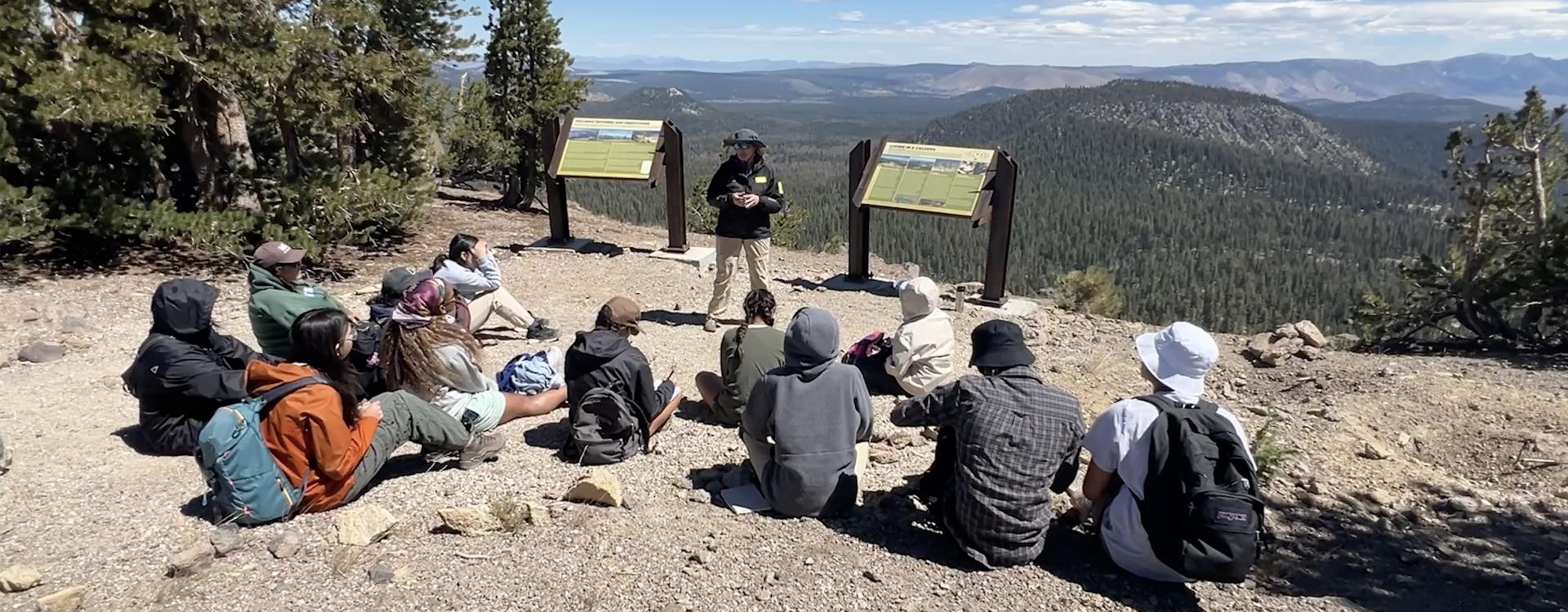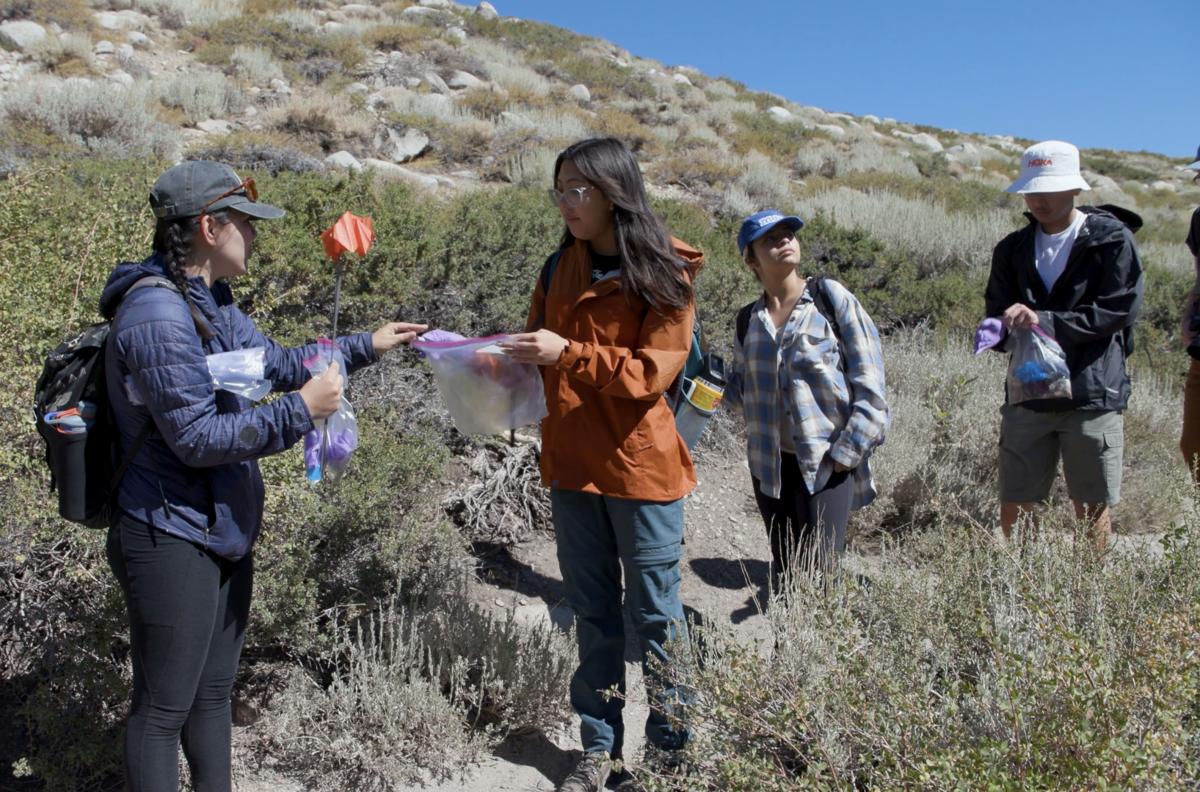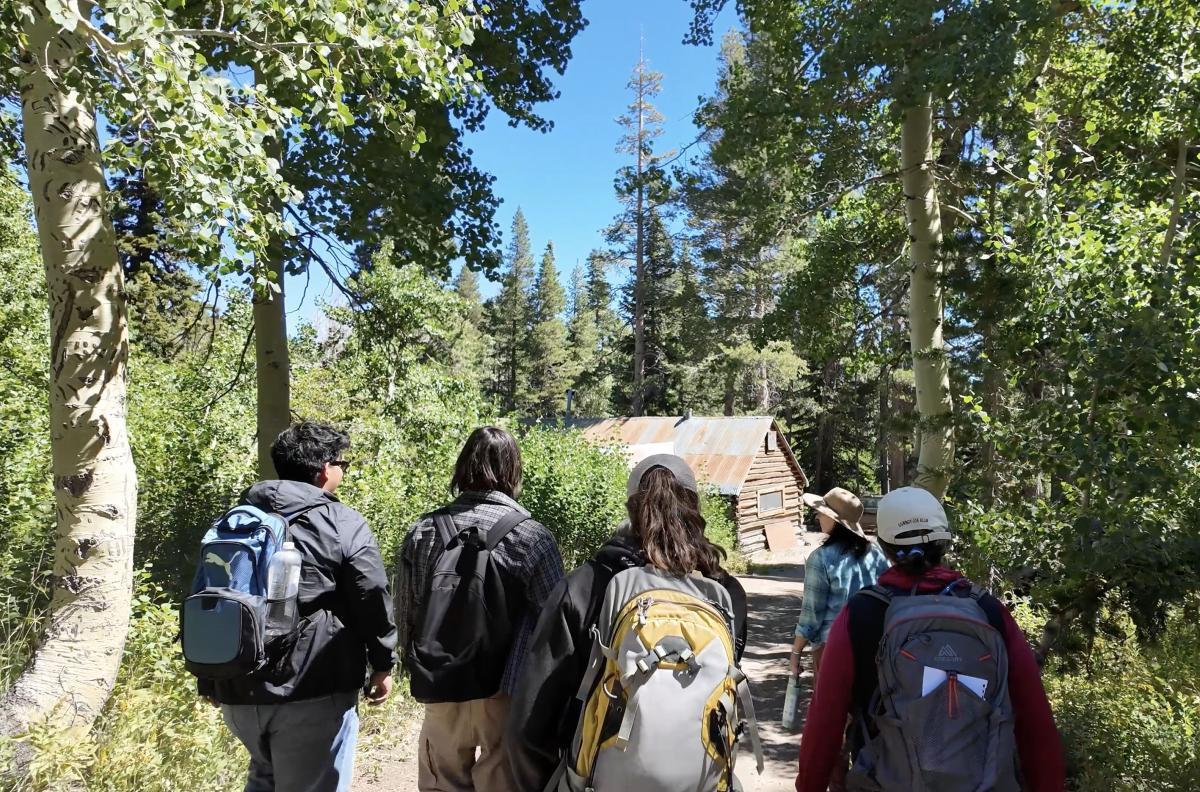
Photo Credit: Jessie Ward O’Sullivan
What Is FUERTE?
FUERTE—Field-based Undergraduate Engagement through Research, Teaching and Education—is a transformative, multi-year program at UC Santa Barbara that introduces undergraduates to the world of environmental science through hands-on fieldwork, immersive research, and close faculty mentorship. Supported by the National Science Foundation, FUERTE is proudly affiliated with UCSB’s Marine Science Institute, a leader in interdisciplinary environmental research.
The program is led by a team of dedicated scientists who serve as principal investigators: Carol Blanchette, Doug McCauley, Gretchen Hofmann, and Hillary Young—all esteemed faculty members and researchers at MSI. Their shared mission is to create accessible pathways into the environmental sciences for students from a wide range of backgrounds and experiences.
Together, they are building more than just a program—they are forging futures in the field, one student at a time.
Learning Through Immersion
FUERTE participants begin their journey with a two-week intensive summer course that brings them deep into California’s Eastern Sierra, a region rich in ecological diversity. From glacier-carved mountains to sagebrush deserts and alpine lakes, students experience a range of ecosystems that few undergraduates ever get to see firsthand.
The course is hosted at the Valentine Eastern Sierra Reserves (VESR)—a pair of protected field sites known as Valentine Camp and the Sierra Nevada Aquatic Research Laboratory (SNARL). These natural reserves, administered by UCSB, provide students direct access to an array of habitats, from montane forests to desert springs, offering endless opportunities for scientific exploration.
Just a short hike from the students’ vantage point on Mammoth Mountain is the Cold Regions Research and Engineering Laboratory (CUES)—a renowned snow science outpost partially embedded in the mountainside. There, climate scientist Ned Bair offers students a raw look into life as a snow researcher: high altitudes, harsh weather, and the physical toll of fieldwork in extreme environments. “It’s tough,” he says. “Working in snow isn’t easy—it’s physically demanding.”
For environmental studies major Liv Valinsky, however, the encounter is more inspiring than intimidating. With a lifelong love for the outdoors and a budding interest in atmospheric science, meeting Bair helps her envision a future she hadn’t fully seen before—one rooted in environmental research. Her excitement is one example of the kind of transformation FUERTE is designed to spark.
“The Eastern Sierra is an incredible training ground,” says Carol Blanchette, VESR director and one of FUERTE’s principal investigators. “The range of ecosystems here allows students to study everything from stream ecology to high desert biodiversity in a single place.”

Jessie Ward O’Sullivan / Video Frame
Field Science as a Gateway
FUERTE is not just about collecting data—it’s about building relationships with the environment. Faculty like Doug McCauley remember the exact moment they fell in love with nature, and they want to pass that experience on.
“The goal is not just to teach science,” McCauley says. “We want students to fall in love with these ecosystems, the way we did.”
Whether it’s tracking wildlife, snowshoeing through high-altitude terrain, or observing plant-animal interactions, students engage in real-world research while learning essential field techniques. At Valentine Camp, they journal their experiences, learning to pay attention to the quiet details—rustling leaves, animal tracks, the scent of rain on sagebrush.
These exercises are more than academic; they help students reflect on their personal connection to nature and begin to imagine themselves as scientists.
Doug McCauley. Photo Credit: Matt Perko
Representation Matters
For many FUERTE participants, this program is their first real step into science—not in a classroom or lab, but in the wild. It's especially impactful for first-generation college students and those from underserved communities who may never have envisioned themselves as researchers.
Jannine Chamorro, FUERTE’s academic coordinator and a UCSB Ph.D. graduate, remembers being in that position. “I had never even met a scientist before college,” she says. “I didn’t think someone like me could do this work—until I was shown how.”
Chamorro now helps guide FUERTE students along their own paths, helping them build the skills—and confidence—to thrive in environmental careers.
Real Science, Real Impact
At Convict Lake, FUERTE students conduct deplete sampling—an environmental monitoring technique that involves collecting and flagging human-made waste. While picking up trash may seem mundane, it introduces students to data collection, sampling methods, and the reality of human impact on natural spaces.
“We’re looking at patterns of human activity through what’s left behind,” explains Gretchen Hofmann, an MSI researcher and FUERTE’s director. “It’s both a training exercise and a service to the community.”
Student Everett Mathiason, who hopes to work in forest and river ecosystems, found the experience eye-opening. “It made me think about my own footprint. I’d like to take what I learned here back to my own community.”

Convict Lake, Mono County, Eastern Sierra Nevada. Photo Credit: Matt Perko
Life at SNARL and Beyond
At the nearby SNARL facility, the students round out their experience by organizing data, crafting presentations, and discussing their findings. Phones are tucked away; the work is collaborative and focused. For many, the experience reshapes their academic goals and career plans.
“This is something I never imagined I’d be part of,” says biology major Victor Rodriguez. “Now, it feels like the beginning of something big.”
At night, the expansive landscape and starlit sky offer a humbling reminder of nature’s scale—and of each student’s place within it.
Photo Credit: Matt Perko
A Community of Scientists
FUERTE doesn’t just teach science; it builds community. From shared meals to mutual support during tough hikes, students learn to rely on and uplift one another. Faculty and grad mentors model collaboration, empathy, and care.
“We actually teach kindness and responsibility as part of being in a field team,” Hofmann says. “And they pick it up fast. They start supporting each other naturally.”
The community extends beyond UCSB. The Mammoth Mountain resort donates gondola access and hosts a naturalist visit. Members of the Bishop Paiute Tribe share stories of their ancestral ties to the land and the challenges of managing water resources. These conversations deepen the students' understanding of both ecological and cultural systems—and their interconnectedness.

Jessie Ward O’Sullivan / Video Frame
Preparing for a Changing World
As the effects of climate change become more visible—drought, wildfires, species loss—the need for skilled, passionate environmental scientists grows. And as Doug McCauley points out, those most affected by these changes are often from already-vulnerable communities.
“We need scientists who not only understand the science, but who care deeply about their communities,” he says. “FUERTE is training those scientists right now.”
The program gives students the tools to not just succeed in science, but to lead it—to shape how conservation and climate action will look in the decades to come.
FUERTE, the Spanish word means strong.
I always thought of it as strong together.
Hope in Action
While the challenges ahead are daunting, FUERTE is building a generation of problem-solvers determined to meet them. And for the scientists who lead the program, this is a source of optimism.
“These students aren’t going to accept the worst-case scenarios,” McCauley says. “They’re going to use everything they’ve learned to make 2050 a better future.”
Because, as the FUERTE team believes, the first step to protecting the planet is falling in love with it.
Adapted from original reporting by Sonia Fernandez, "Bridge to a Bright Future," The Current, UC Santa Barbara, 2025.